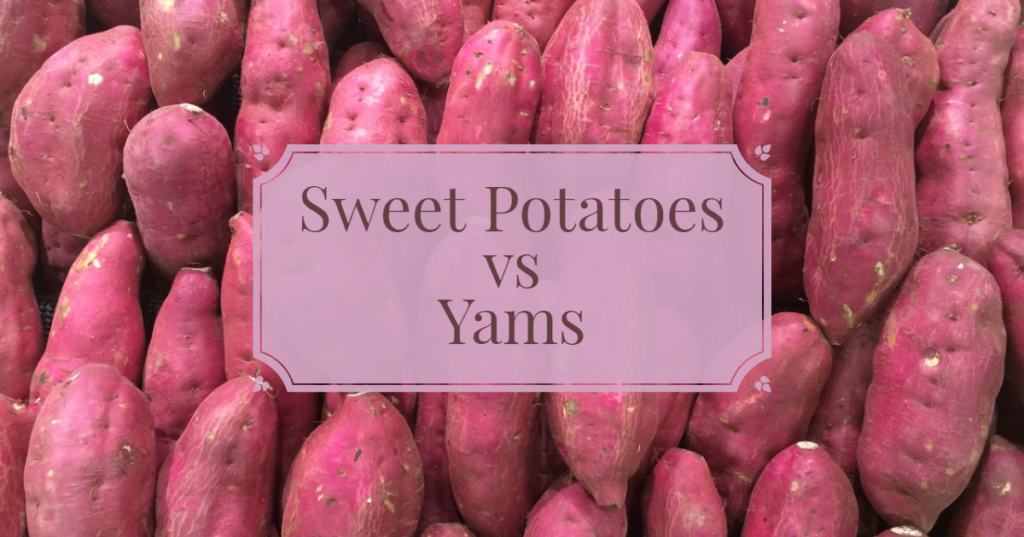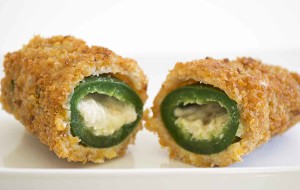
Ok, so I hear it all the time, yams are NOT sweet potatoes. I know this, it’s a fact, but before a few weeks ago, I couldn’t tell you what the difference is between the two. So, I decided to do some research, and found some pretty interesting facts.
Let’s start with the similarities:
- They are both tubers, or root veggies
- Both these veggies are considered a great source of fiber
- Both also considered a good source of vitamins A & C
- The above ground plants of both veggies are herbaceous perennial vines
Sweet Potato
The sweet potato belongs to the Convolvulaceae family, which is the bindweed or morning glory family. It is very distantly related to regular potatoes and not related to yams in any way. They are native to the tropical regions of the Americas and are now heavily produced in China. These root veggies require a minimum of 500mm of rainfall during their growing season, grow best at a constant temp of 24°C with warm nights and can not tolerate frost. A big bonus for anyone wanting to grow them at home is that they are known to have very few natural enemies, which means they rarely require pest control.
They can be white, yellow, red, purple, pink, and several other colours. The darker the colour the sweeter the taste.
The nutrient content of sweet potatoes is very interesting. All of the following daily values are based on a cooked 100g serving. The information found during my research which surprised me the most, is that this root veg provides approximately 520% of the recommended daily intake (RDI) of vitamin A. As mentioned above these wonderful tubers are an excellent source of fiber providing approximately 18% RDI and are a good source of vitamins C, B6, and E. And if this wonderful veggie wasn’t appealing enough, it is made up of complex carbohydrates, making it a splendid menu option.
Yams
The yam belongs to the Dioscoreaceae family, more specifically theDioscorea genus. There are at least eight different plants in the Dioscorea genus which produce a yam. They are related to grasses and lilies. The above ground plants are vines that do not have woody stems (meaning they are herbaceous). Outside of most cultivation areas they are considered to be a noxious weed, meaning that they can multiply quickly and grow rapidly.
Yams are produced in Asia, Oceania, and the Americas, though mainly in Africa. To produce a good tuber approximately 1500 mm of rain is required during their growing season and can grow up to 50 feet in length and about 6-8 inches round, and can weigh up to 25 lbs. This is an important differentiating factor in the Sweet Potato vs. Yam comparison, as sweet potatoes do not get nearly this big in size. These root veggies vary in colour from light pink to dark brown. The “meat” of the yam can also vary in colour, from pink to purple, or yellow to white, depending on the variety.
Yams are an excellent source of fiber, approx. 27% of RDI, and potassium, approx. 19% of RDI. Similar to sweet potatoes, they are a good source of vitamins A, C and B6. However, they do not have nearly as much vitamin A as sweet potatoes. They are also a good source of thiamin (B1) and magnesium. It is important to note that yams are not recommended to be eaten raw as they can cause us to become ill.
Can Sweet Potatoes and Yams be used interchangeably in Recipes
There is a long answer and a short answer to this question. The short answer is simply no. Sweet potatoes and yams have different flavors. Yams are less sweet and have a drier texture.
The confusion comes into play because in North America the term yam is often applied to sweet potatoes even though this is incorrect. Even in grocery stores you can often see sweet potatoes ladled as yams. During my reading I learned that this began because there are two varieties of sweet potatoes commonly sold in North America. One is lighter skinned with paler flesh, and the other has darker skin with deeper orange flesh.
The darker skinned sweet potatoes tend to be be sweeter and to have a moister texture when cooked. They are now the more common of the varieties sold in North America, but were really only introduced a few decades ago. When they first began showing up in grocery stores many super markets labeled them as yams to differentiate the two. This has led to sweet potato being referred to as a yam even though it is not a true yam.
True yams are not as commonly sold in North America and if you are seeing them in the super market there is a good chance that these are sweet potatoes marked as yams. If you are in search of true yams looking at your local ethnic grocery is the best way to find these.






